Hydrogeological situation on 1 October 2023
During the month of September, the depletion of the aquifers continued and levels generally fell across the country (70% of aquifers). The storms in mid-September did little to help recharge the aquifers.
The situation deteriorated between August and September: 66% of levels were below monthly averages in September (62% in August 2023). The state of the aquifers varies according to the region. However, the levels remain below monthly averages over much of the country, particularly around the Mediterranean coast, in the Rhône--Saône corridor and in southern Alsace.
The 2023 low-water period – the lowest annual point in terms of water levels – will most likely be later than usual, due to a lack of rainfall and mild temperatures at the start of this autumn. It remains highly uncertain whether the recharge period – which commences when abundant autumnal rainfall arrives and vegetation becomes dormant – will start in October. The situation needs to be closely monitored in all the aquifers whose levels were below average in September. At the beginning of the recharge period, it is extremely important to give water reserves that are in a fragile state the time they need to recover in order to ensure their long-term sustainability.
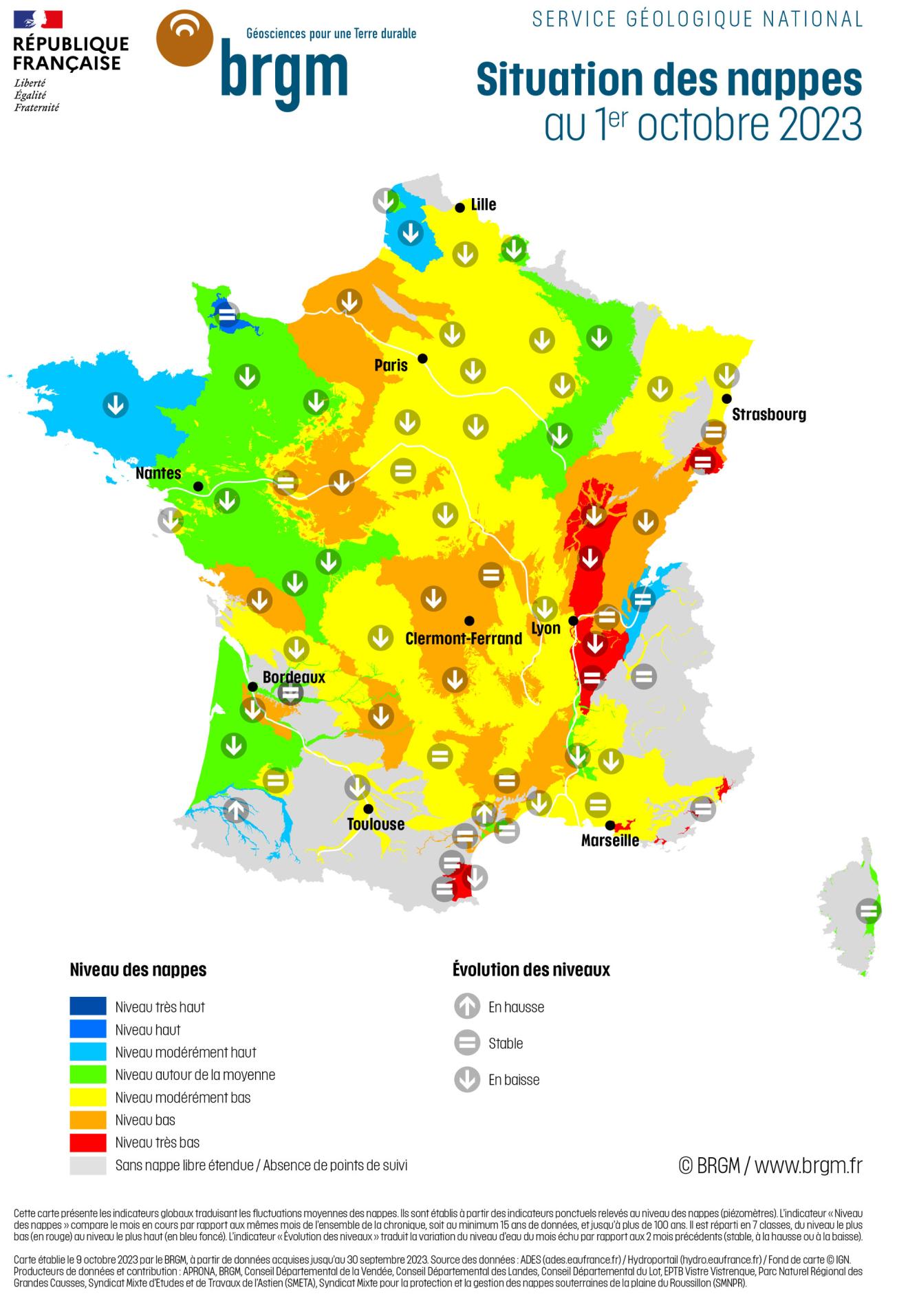
Map of aquifer levels in mainland France on 1 October 2023.
© BRGM
Groundwater trends
The 2022-2023 recharge period was insufficient over a large part of France. Early spring rainfall led to recharge episodes, thus delaying the start of the depletion period in those areas with the highest rainfall. The depletion period began gradually between March and May. The rainfall during the summer of 2023 added little water to the aquifers. Nonetheless, in certain cases, the summer rain helped to stabilise the water levels and even generate small recharges in reactive aquifers and areas that received heavy rainfall, while also reducing groundwater abstraction.
In September 2023, the aquifer depletion continued and groundwater levels decreased in most areas: levels at 70% of the observation points decreased (compared to 73% in August).
The month of September usually marks the start of the recharge period, with the first significant rainfall episodes and the drop in temperatures. The low-water period (lowest annual point in terms of water levels) usually occurs between mid-October and November, although it can often arrive earlier, starting in September in areas which have reactive aquifers and receive large amounts of rainfall.
In September 2023, the amount of rainwater that infiltrated deep into the ground remained relatively low, due to insufficient rainfall and localised, intense storms that resulted in run-off. Moreover, the vegetation remained active, due to high temperatures, and continued to consume some of the water that infiltrated into the ground.
In the inertial aquifers, the depletion process remained active and levels fell during September. The stable levels observed were due to the slow infiltration of the July and August rains or the interruption of irrigation campaigns. Both of these situations can be observed in the aquifers in the Rhône corridor, for example.
In the reactive aquifers, the localised, and sometimes extremely intense, storms in mid-September had little impact on the aquifers. However, occasional recharge episodes were recorded locally. This rainwater infiltration was often insufficient to have a lasting impact on the aquifers and monthly levels continued to fall. This being said, the levels stabilised in certain aquifers, particularly in the south-eastern section of mainland France and in Corsica. Finally, levels rose in the Adour and Gave du Pau alluvial aquifers, due to significant rainfall in August and September.
The groundwater situation
In 2022, the low-water period was severe for most of the aquifers, with recharging remaining low during the autumn and winter of 2022-2023. At the end of the winter, the state of the aquifers was therefore unsatisfactory. The spring and summer rainfall helped to maintain, and sometimes even improve, aquifer levels in the areas that received the most rain. The impact that this rainfall had on the various aquifers depends on how reactive they are to rainwater infiltration. In July and August, the heavy rainfall in the northern part of France made the soil humid and the water then filtered down deep into the ground. This recharge episode improved the general state of the reactive aquifers, as well as that of certain inertial aquifers in a few areas.
The overall situation deteriorated slightly between August and September: Levels of 66% of observation points were below monthly averages (62% in August) and 18% were very low (18% in August). Generally, the situation is more positive than that observed last year, in September 2022, when 74% of the levels recorded were below monthly averages. However, the differences in local situations were more marked in 2023 than in 2022.
The situation in September 2023 was highly variable, essentially depending on the cumulative rainfall over the spring and summer and its impact on the aquifers.
In the northern half of the country, the levels of the inertial and mixed-cycle aquifers in the Artois region, the Paris Basin, eastern Lorraine and Alsace were generally moderately low to very low. Going into more detail, the situation remained poor in the Sundgau region and in many central and western parts of the Paris basin. However, it improved locally along the coast, from the Seine-Maritime to the Pas-de-Calais regions, where levels gradually increased to higher than normal averages for the month. The levels in reactive aquifers were generally more positive, ranging from comparable-to-normal to moderately high. This is due to several recharge episodes during the spring and summer, which helped to improve their situation. In September, the rainfall helped to maintain aquifer levels in the west of the country (Brittany and Poitou). However, the lack of rain in August and September had an impact on the highly reactive Jurassic limestone aquifers in western Lorraine and the Côte-des-Bars and the situation deteriorated in these areas.
In the south-west, the most reactive aquifers on the Atlantic coast (alluvial aquifers and Plioquaternary formations) benefited from several recharge episodes during the spring and summer. The levels ranged from comparable-to-normal to moderately high. The aquifers with more inert recharge systems (Miocene sand and limestone aquifers in the Armagnac region and Oligocene sand and limestone aquifers in the Entre-deux-Mers region) did not benefit much from the summer rains. Their situation is less positive, with moderately-low to low levels.
In the Charente, Massif Central and south-eastern regions of the country, the rainfall in mid-September had no visible impact on the aquifers. Their situation changed very little between August and September. The levels in the inertial aquifers of the Rhône-Saône corridor were quite worrying, ranging from low to very low. Only the alluvial aquifers in the Savoie foothills were above monthly averages. The levels in the reactive aquifers were generally below the normal monthly levels or very low. The situation continued to deteriorate around the Mediterranean coast. The risk of sea-water intrusion increased in coastal aquifers that had low to very-low levels, from the Côte d'Azur to the Roussillon region.
In Corsica, the rain that fell following Storm Réa (28-29 August) and in mid-September had a beneficial effect on the aquifers. Levels were comparable to monthly norms.
Aquifers in a favourable state
Several aquifers were in a satisfactory state, with moderately-high to high levels in comparison to those recorded during September in previous years:
- The levels in the Cenomanian chalk marl aquifer on the Artois-Picardy coast remained moderately high, following the high-excess recharge of 2022-2023, supported by rainfall in the spring;
- The levels in the aquifers of the Cotentin isthmus were high, following significant recharge episodes in August and September;
- The aquifers in the West-Brittany basement benefited from recharge episodes during the spring and summer and their levels were moderately high;
- The Adour and Gave du Pau alluvial aquifers were moderately high, following several recharge episodes during the spring and summer.
Aquifers in an unfavourable state
Many aquifers were in an unsatisfactory state, with very low levels compared to those recorded in September for previous years, owing to an extreme rainfall deficit over the last few months or years:
- The inertial Plioquaternary and Miocene aquifers in the Sundgau, Dijonnais, Bresse, Dombes, Nord Isère and Bas-Dauphiné areas had very low levels, due to several insufficient recharges over successive winters and their highly inert recharge systems;
- Levels in the alluvial aquifers on the Côte d'Azur were very low, since the 2022-2023 recharge was insufficient. The depletion of the aquifers continued throughout the summer and the rainfall in September had very little impact;
- The groundwater in the Roussillon multi-layer aquifer were in a particularly poor and unprecedented situation, with very low levels. Water-abstraction restrictions during the summer followed by scattered rainfall and reduced demands on the water supply in September seem to be having a beneficial effect, but this is often limited to specific localities and far from being enough to compensate for the recharge deficits since 2022.
Comparison between 1 October 2022 and 1 October 2023
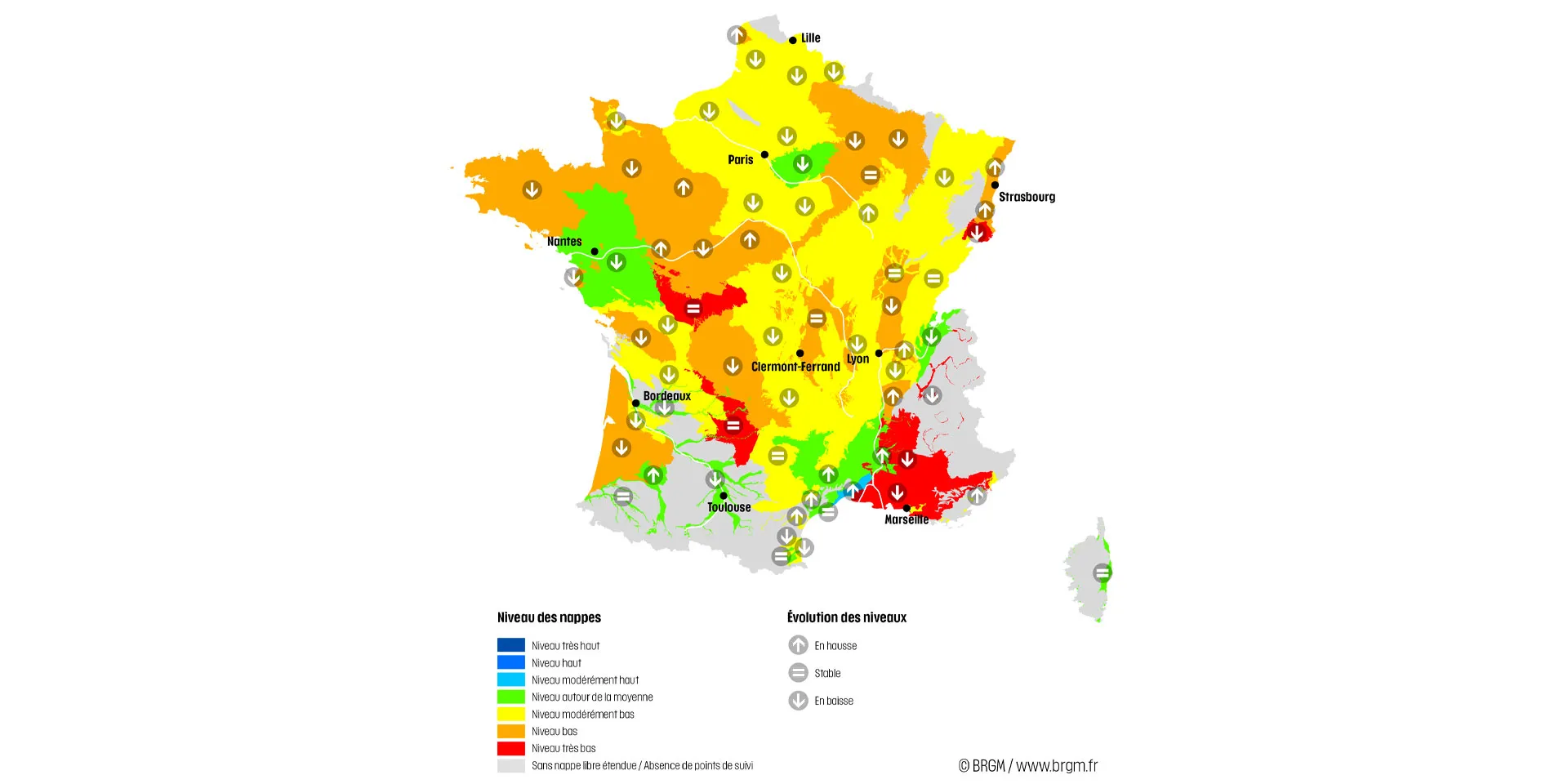
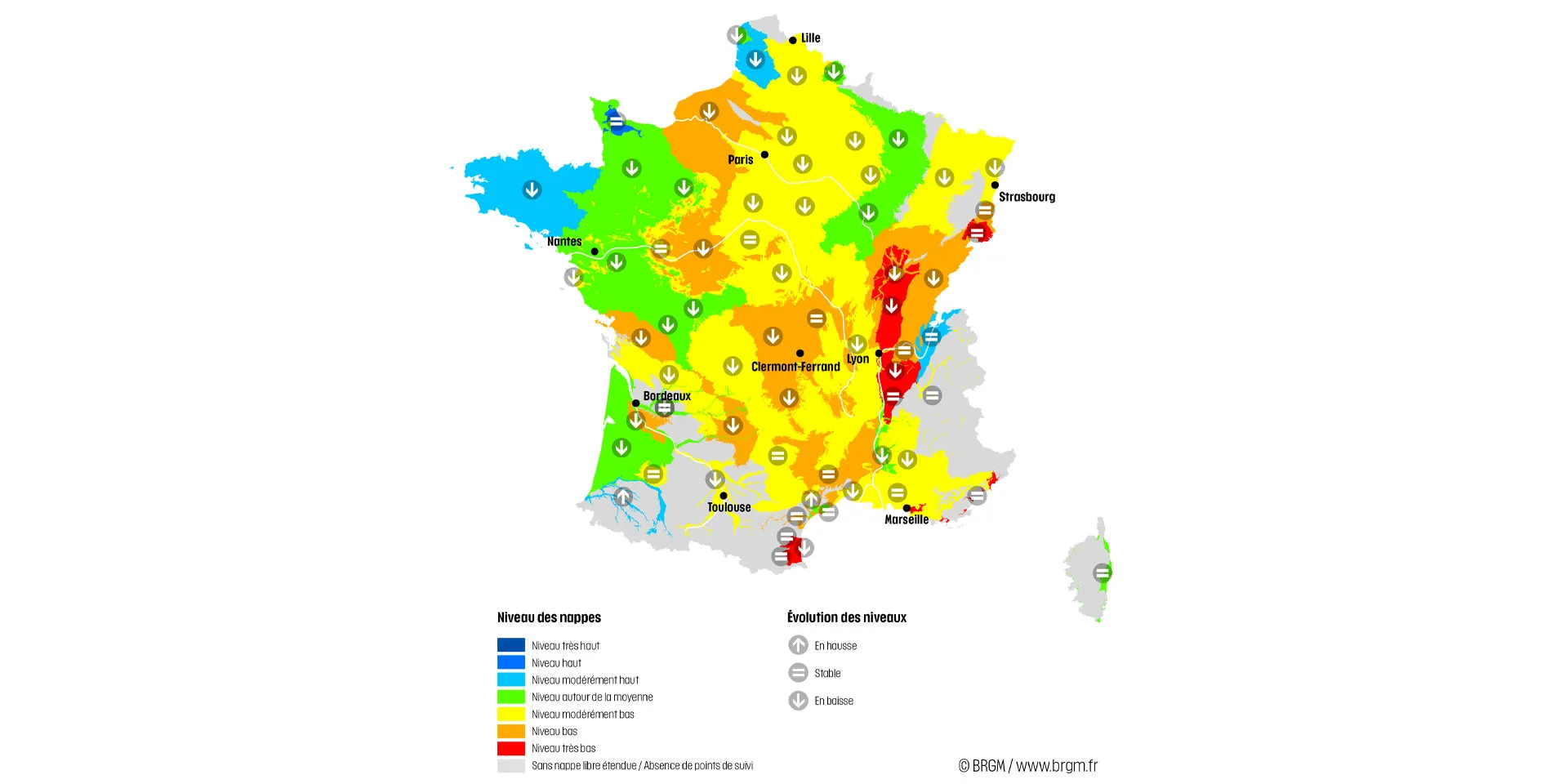
Map of France showing the state of the aquifers on 1 October 2022 (left) and 1 October 2023 (right).
© BRGM
Forecasts
The Météo-France seasonal forecasts for October, November and December predict higher temperatures and more rainfall than usual across the whole of France.
Autumn is generally a pivotal period, between the end of the summer depletion (falling levels) and the beginning of the winter recharge (rising levels). The reversal of the current trends will depend on the amount of rainfall that infiltrates deep into the ground (which will depend both on the amount of rain and when vegetation enters its dormant period), as well as the extent to which aquifers are inert or reactive. The effect of reduced water abstraction, from the end of the summer onwards, will also ease the pressure on groundwater. According to Météo-France's forecasts, abundant rainfall over the next few months should enable water to infiltrate deep into the ground. However, the lack of rainfall and high temperatures at the end of September and beginning of October suggest that the low-water period (lowest annual point in terms of water levels) will start late this year. Mild temperatures will probably delay the onset of the dormancy period for vegetation. Active vegetation – and thus sustained high-levels of evapotranspiration – generally reduces the infiltration of rainwater into aquifers. Consequently, it remains highly uncertain whether the recharge period will start in October.
As regards reactive aquifers, the trends and developments in October will depend primarily on local, effective rainfall. The recharge period could begin in areas that receive heavy rainfall. Over the next few weeks, this effective rainfall should lead to a rapid improvement in the state of the aquifer levels. If there is insufficient rainfall, the downward trend should continue. In this case, the situation could further deteriorate and the low-water period would be particularly severe, with low to very-low levels being recorded in aquifers that already had lower-than-normal levels in September. In the longer term, the levels in early spring 2024 will depend on how abundant the recharge is during this autumn and winter. It should be noted that spring rains will also delay the start of the depletion period. In the aquifers around the Mediterranean coast, where water levels are very low (Côte d'Azur and Roussillon coastal areas), it remains uncertain whether the groundwater reserves will be replenished, since this would require the 2023-2024 recharge to be far greater than normal.
The situation of inertial aquifers is not expected to change much in October and should remain relatively similar to that in September. October rainfall is not expected to generate a significant recharge. Aquifer depletion should slow considerably, if there is sufficient rainfall over the next few weeks; the depletion is nonetheless expected to continue until November, or even December, for the most inert aquifers. This is because it can take several weeks, and sometimes up to three months, before effective rainfall leads to a rise in water levels in this type of aquifer. The situation of these aquifers is expected to evolve slowly over the autumn and through to the spring. It will either improve, if there is a surplus of effective rainfall, or deteriorate, if there is a lack of rain and the amount of rainfall does not compensate for the amount of water that flows out naturally through springs, rivers, into the sea, or that is consumed by human withdrawals. As regards the aquifers with very low levels during the low-water period (for example in the Sundgau area and the Rhône-Saône corridor), it seems highly unlikely that the recharge deficits accumulated over several years will be compensated for, or that they could return to above-normal levels in 2024.
During the autumn, winter and early spring, the state of all the aquifers across the country will need to be monitored, and particularly in those that have not begun their winter recharge. At the beginning of the recharge period, it is extremely important to give water reserves that are in a fragile state the time they need to recover in order to ensure their long-term sustainability.
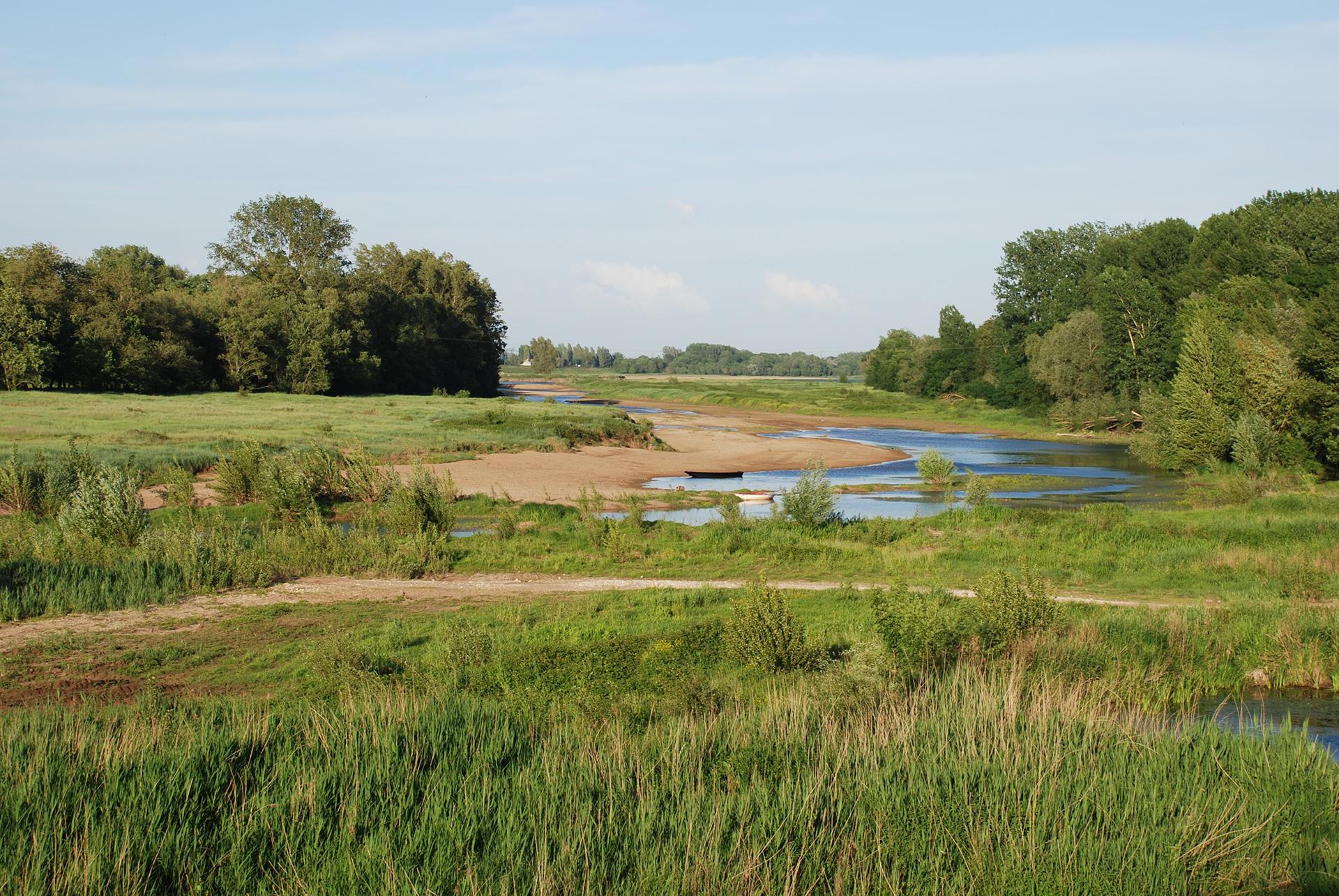
State of groundwater: monitoring by BRGM
Groundwater is a widely used resource: in metropolitan France, it accounts for nearly two-thirds of drinking water consumption and more than one-third of agricultural water consumption. It is also widely used in the industrial sector. Groundwater tables depend on cyclical recharges.
BRGM monitors groundwater levels and quality in mainland France. Discover the actions carried out by the French geological survey and the resources and databases available on groundwater in France.
Press contact


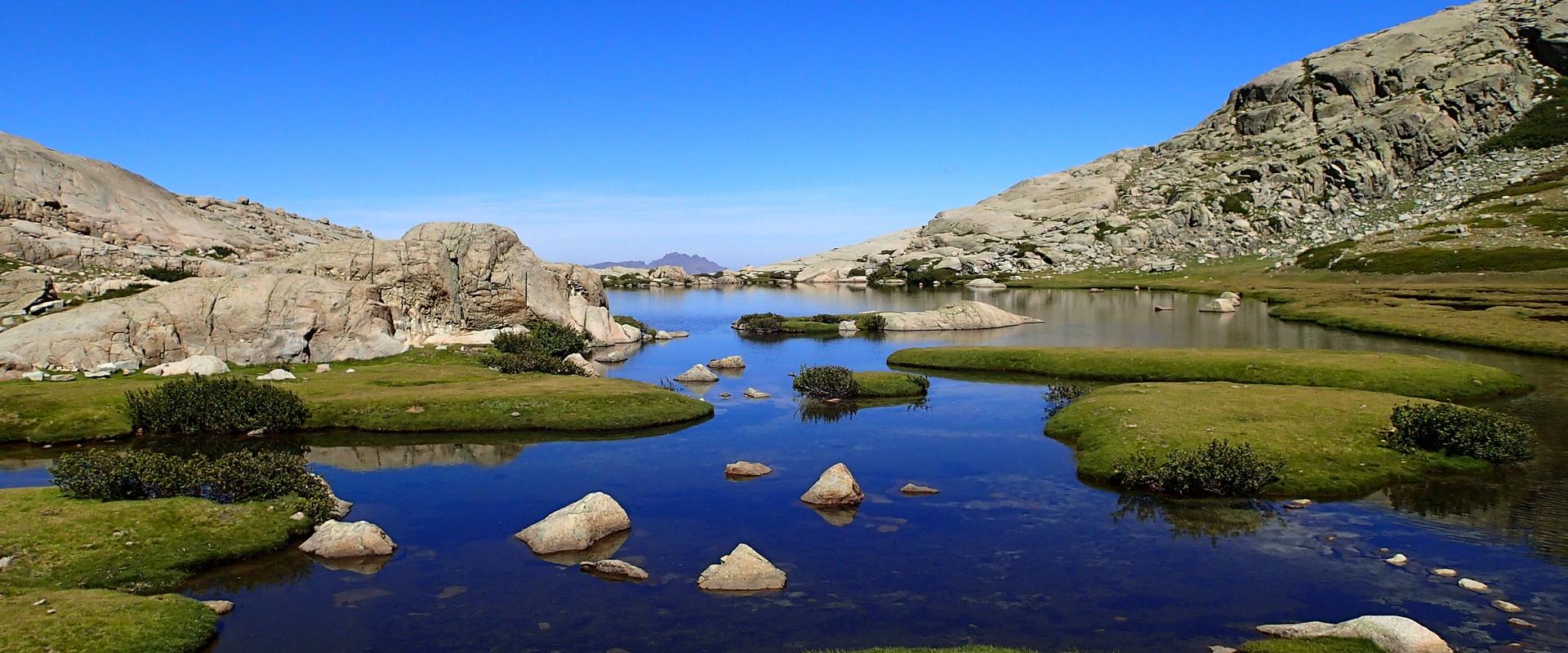
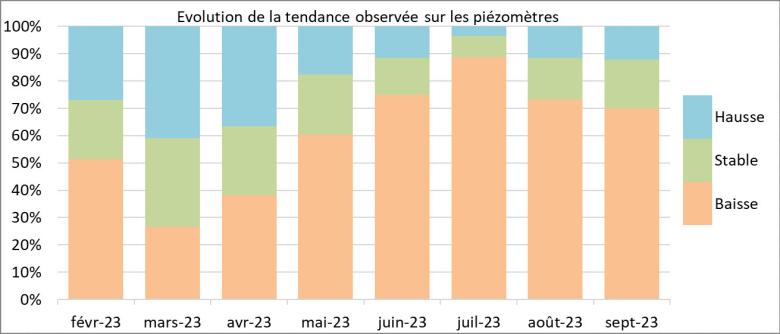
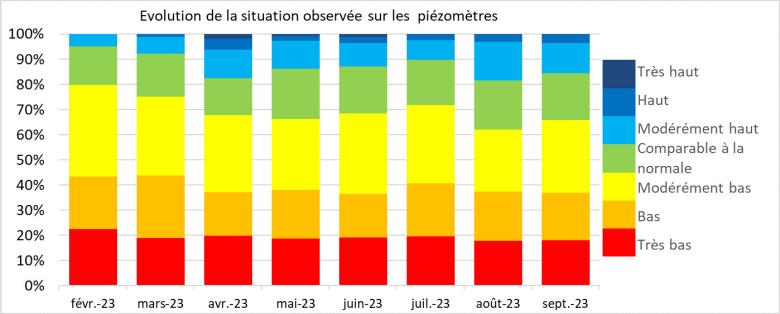




Map drawn up by BRGM on 9 October 2023, based on data from the ADES database, acquired up to 30 September 2023. Data source: ADES database (ades.eaufrance.fr) / Hydroportail (hydro.eaufrance.fr) / Background map © IGN. Data producers and contributors: APRONA, BRGM, Conseil Départemental de la Vendée, Conseil Départemental des Landes, Conseil Départemental du Lot, EPTB Vistre Vistrenque, Parc Naturel Régional des Grandes Causses, Syndicat Mixte d'Etudes et de Travaux de l'Astien (SMETA), Syndicat Mixte pour la protection et la gestion des nappes souterraines de la plaine du Roussillon (SMNPR).
This map shows the global indicators reflecting the average fluctuations of the aquifers. They are based on point indicators collected at groundwater monitoring points (by means of piezometers).
The "Aquifer levels" indicator compares the current month’s figures with those of the same months in the entire record, i.e. at least 15 years of data and sometimes up to as much as 100 years of data. It is divided into 7 classes, from the lowest level (in red) to the highest (in dark blue).
The grey areas correspond to areas without unconfined aquifers, i.e. with an impermeable or semi-permeable layer above the aquifer, and/or sectors with a very low density of measuring points. This last case primarily concerns mountainous areas with small, heterogeneous aquifers.
The "Evolution of levels" indicator reflects the variation of the water level of the past month compared to the two previous months (stable, increasing or decreasing).
These global indicators reflect general situations and trends and do not take into account possible local disparities.